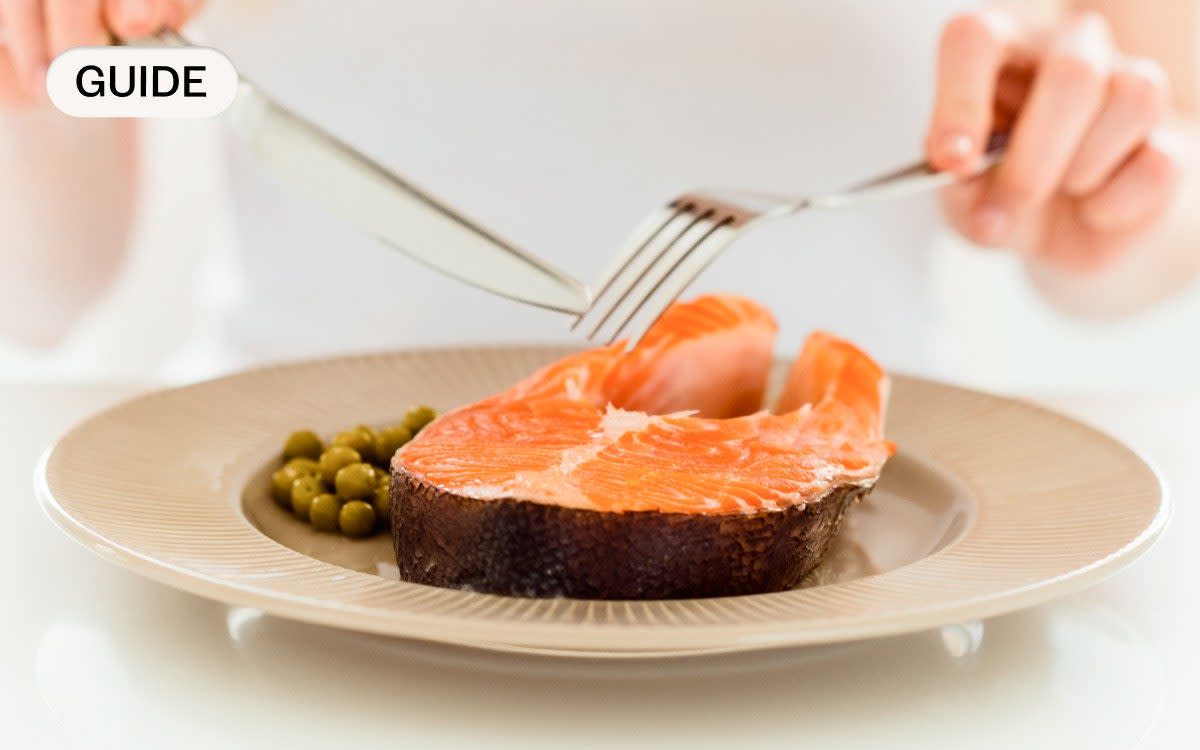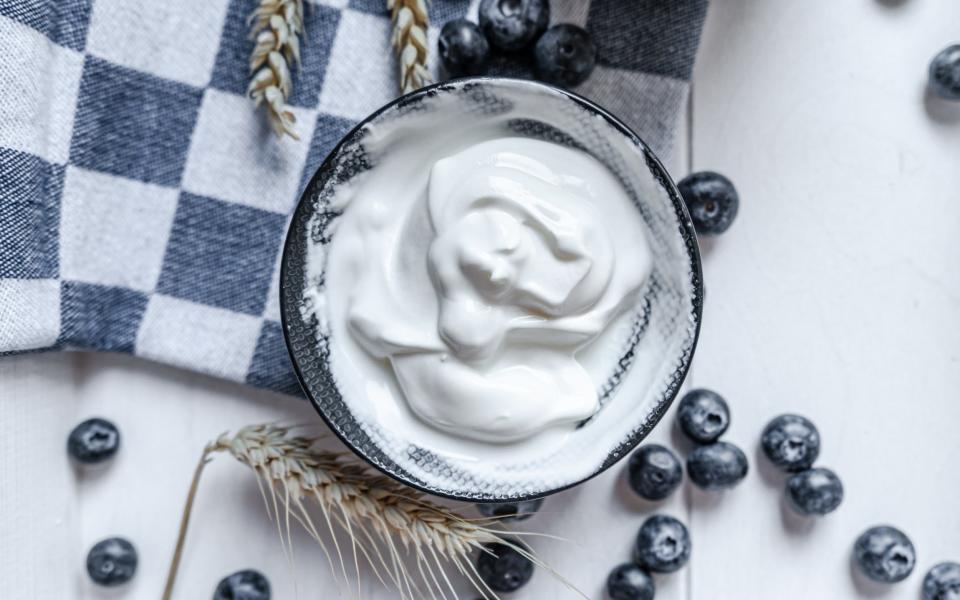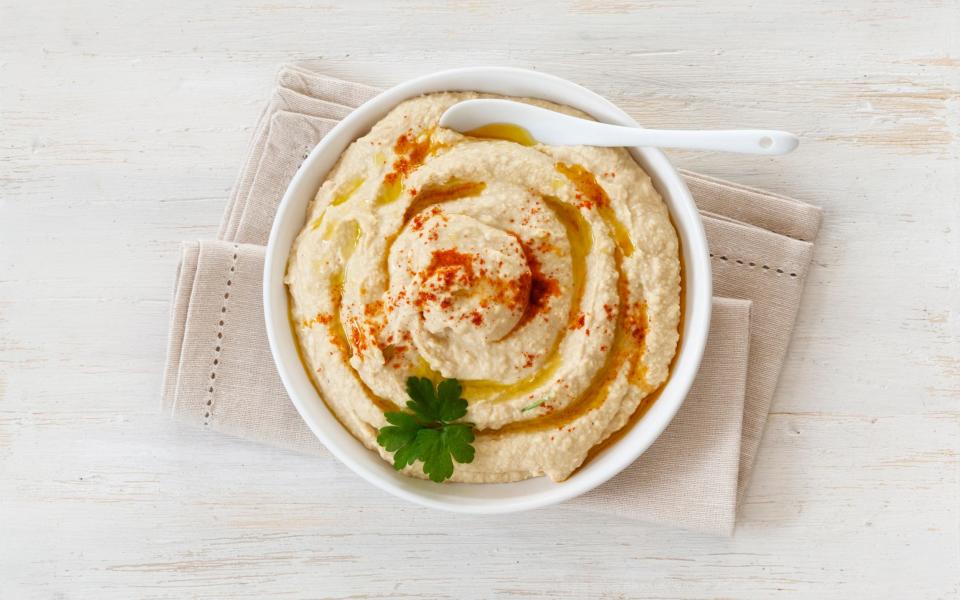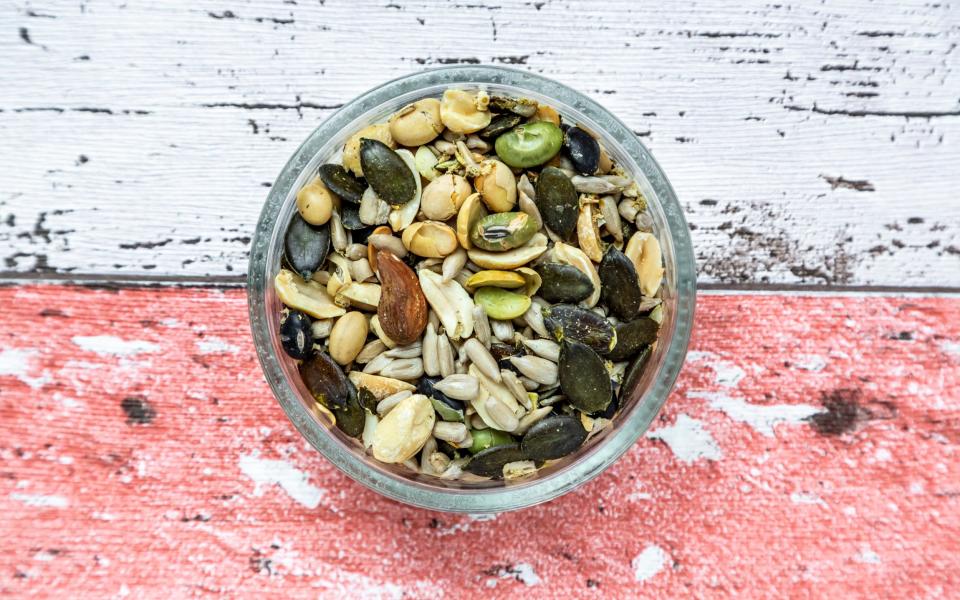How much protein do you really need?

Find out how to maximise your protein intake with a sample menu from Dr Clare Bailey
Apparently we’re obsessed by protein. Sales of protein drinks, cottage cheese and yoghurts are up according to the Waitrose annual food and drink report. Step into your local supermarket or café and you might notice a new category of products spreading across the shelves. While protein bars and low-carb options are nothing new, they’ve been joined by a wide range of protein-enriched foods from pasta and wraps to breakfast cereals and drinks. The sheer volume of these products indicates that many of us are making more of an effort to incorporate protein into our meals and snacks – and it looks like we can’t get enough of the stuff.
It’s not difficult to see why there’s such a buzz around protein. After all, there’s an increasing body of research extolling the power of protein: experts claim it can aid weight loss, build muscle, banish cravings and improve our overall wellbeing. One study found that people following a high-protein diet lost 53 per cent more body fat than a group eating a normal amount of protein but consuming the same number of calories. Other research found that simply increasing protein intake from 15 per cent to 30 per cent of total calories made overweight women eat 441 fewer calories each day without trying. Research also indicates that a high-protein diet can help the body to repair after injury.

However, data from the British Nutrition Foundation indicates that we’re already exceeding the guideline amount set out in the UK Government’s healthy eating model, The Eatwell Guide. This recommends a daily protein intake of 0.75g per kilo of bodyweight, which works out at 56g/day for men and 45g/day for women (based on body weights of 75kg for men and 60kg for women), but on average men are currently consuming about 85g, and women about 67g per day.
As a result, not everyone agrees that eating more protein is a good thing. Research from the University of Chicago found that just six weeks following a very high protein diet can increase the risk of kidney stones and impair the body’s ability to absorb calcium, increasing the risk of bone loss in the long term. Dr T Colin Campbell, author of The Future of Nutrition, argues that an excess of animal protein (from meat, eggs and dairy) can also increase the risk of a number of serious health conditions, including cancer and diabetes. It’s well documented that eating lots of red meat can cause bowel cancer, as well as being linked to an increased risk of cardiovascular disease. In fact, a 2018 study by Finnish researchers found that high-protein diets can increase the risk of heart failure in older men by as much as 49 per cent.
With so much contradictory evidence and conflicting advice, it’s hard to know what to do for the best. So we asked the experts to help us cut through the confusion.
How many grams of protein should I eat a day?
Not everyone agrees with the data from the British Nutrition Foundation. “For best function, we need to be looking towards 100g of protein per day, and for some people up to 120g,” says Dr Clare Bailey, author of The Fast 800 Keto Recipe Book. “On the whole, we’re not eating enough protein in our diets, particularly among groups who eat a lot of ultra-processed foods. It’s important to eat enough because we don’t store protein in the body in the same way that we store fat or carbohydrates, so we need it on a daily basis. It’s vital for just about every function such as supporting strong bones and muscles, immunity, repair and maintaining a healthy weight and metabolism.”

Is it harmful to have too much protein?
It’s hard to have too much of the stuff. “The vast majority of us are under-eating protein, not over-eating it,” says French biochemist Jessie Inchauspé, founder of Glucose Goddess and author of Glucose Revolution. “There’s nothing to fear when it comes to protein – it’s a healthy, essential part of our diet.”
If you seriously max out on protein, there can be side effects, but you have to eat a lot. “There can be problems where the body can’t process large amounts of protein and the kidneys struggle to break it down,” says Prof Tim Spector. “But for that to be an issue you would have to go to four or five times the recommended amount, which is very hard to do. Most people can cope with doubling the amount of protein in their diet without any problems. If you eat too much, you’ll probably just pee it out, or else it will be stored as fat.”
Why some need more protein than others
The other thing to bear in mind is that the amount of protein we need increases with age: from the age of 50 we start to lose muscle, so our protein requirements increase – we need more of it to maintain muscle mass and strength, and some groups need more than others.
Additional protein can be particularly beneficial for women. The Women’s Health Initiative study found that a higher protein intake of around 1.2g per kg of body weight was associated with a 32 per cent lower risk of frailty and better physical function. “We don’t digest and process protein as well as we age,” explains Dr Bailey. “There’s even evidence to suggest that simply adding more protein during the menopause can significantly improve symptoms.”
More protein is also beneficial for pregnant women and athletes who want to gain muscle mass and strength when training.
“You might need more protein if you’re very active, on a restricted diet, or if you’re sick or elderly and not eating enough overall,” explains Prof Spector. “So if you’re vegan, or if you’re a teenage bodybuilder who is on a strict diet, or you’re aged 80 and you’re not eating well, it pays to be a bit more careful.”
Protein helps you lose weight
Eating the right sources of protein can also help you regulate your hunger hormones.
“Getting an adequate amount of protein stabilises glucose levels, increases satiety and reduces cravings,” explains Inchauspé.
Dr Bailey agrees. “The main issue is that the vast majority of us are just not eating enough quality protein, and relying on sweet and starchy processed foods instead.”
What are the main high protein foods?
“It’s best to have good-quality protein in every meal,” says Dr Bailey. “That means eggs, meat, fish, full-fat Greek yoghurt, cottage cheese, nuts and seeds. If you can afford to eat high-welfare or organic meat that’s probably more nutritious, and it’s better for the environment but expensive. I’m a big fan of frozen mackerel, frozen vegetables and tinned fruit.”
Prof Spector agrees that the type and quality of the protein you eat really matters. “If you’re eating very low-quality meat in ultra-processed food and ready meals you might as well swap that for legumes,” he says. “You won’t notice the difference and it’s better for your health. Eating meat every day is associated with heart problems and cancer but there’s no evidence that eating very small amounts of high-quality unprocessed meat is a problem.

Protein from plant-based sources
It’s also important not to overlook other food groups.
“The real danger for me is that people who have high-protein diets have less fibre because they’re not eating plants. That’s really bad for them and means they’re going to get more heart disease.
“The safest sources of protein that everyone agrees are good for you – and good for your heart – are nuts, seeds, beans and legumes. I’d like people to realise that there are proteins in plants, in mushrooms and spinach – and you can get this from a diverse diet. That’s the best way.”
All of those foods are vegan, and much healthier than lots of the food marketed at vegans, which is quite processed.
For Spector, the solution is to eat a varied diet. He says: “If you stick to the advice in ZOE and in my book about eating a whole range of diverse plants you’re highly unlikely to have a protein deficiency because you’ll be getting different types of beans in there, you’ll be mixing those with different whole grains, and it’s that mix that gives you the right balance.”
“If you are struggling to get enough protein into your diet, protein bars and shakes can be a good idea, but make sure they’re unsweetened. The best sources are whey protein or pea protein,” says Inchauspé.
Maximise your protein intake with the sample menu from Dr Clare Bailey
Breakfast: Porridge topped with fresh fruit
100g full-fat Greek yoghurt: 4g protein
20g of unsalted nuts and seeds: 4g protein
1 tablespoon of peanut butter: 4.6g protein
Lunch: Three egg omelette filled with cheese and mushrooms, served with salad
Three egg omelette: 17g protein
30g cheddar: 8g protein
50g mushrooms: 1.5g protein
Dinner: Salmon fillet served with wholegrain rice, peas and broccoli
50g of peas: 2.5g protein
50g of broccoli: 2g protein
Salmon fillet: 29g protein
Snack: Oatcakes and humous
Two oatcakes with a quarter of a pot of houmous: 4g protein
10 top sources of protein
1. Eggs (6g of protein per egg)
The ultimate convenience food, and an easy breakfast option. Enjoy them boiled, poached, scrambled or whip up an omelette.
2. Full-fat Greek yoghurt (2.6g of protein per tablespoon)
Opt for full-fat Greek yoghurt as it’s made from cow’s milk that has been strained to remove excess whey and lactose. It’s high in protein because it’s thicker and more concentrated. One portion is about three tablespoons.
3. Lentils (10g of protein per 120g)
Up to a third of the calories in lentils comes from protein. Combine them with rice or wheat to ensure you’re getting the essential amino acids your body needs. One portion is about four tablespoons.
4. Lean steak (40g of protein per 130g steak)
Choose higher-welfare, grass-fed meat if possible, and save it for an occasional treat. Aim for a portion that’s about half the size of your hand.
5. Unsalted nuts and seeds (4g of protein per 20g)
Sprinkle them on salads or porridge, or eat them as a snack. Eat a handful of nuts and seeds – such as almonds, pistachios, sunflower seeds and pumpkin seeds – each day.

6. Salmon fillet (29g of protein per 120g fillet)
Eating oily fish such as salmon twice a week is recommended as it’s a rich source of omega-3 fatty acids which support heart health. The ideal portion is about half the size of your hand.
7. Cheddar (7.6g of protein per 30g)
Cheddar is a good source of calcium, vitamin K and protein, and it’s versatile enough to add to a sandwich or omelette, or to be cut into cubes for a snack. A 30g serving is about the size of two thumbs.
8. Beans (around 10g of protein per 120g)
Beans are a great source of protein and there are lots of varieties to experiment with. Add white beans, black beans, chickpeas and kidney beans to soups, stews and curries. As a guide, allow six tablespoons per portion.
9. Peanut butter (4g of protein per 20g)
Peanut butter is a good source of protein and it also contains heart healthy fats. Choose a brand without added sugar, and aim for a portion size of about one tablespoon.
10. Cottage cheese (9g of protein per 100g)
Use it to make dips, pasta sauces, mashed potatoes or even in baking. Cottage cheese is a cost-effective and versatile high-protein option. One portion is about three tablespoons.
Recommended
The best protein bars in 2023 (that actually taste good) for a nutritious snack


